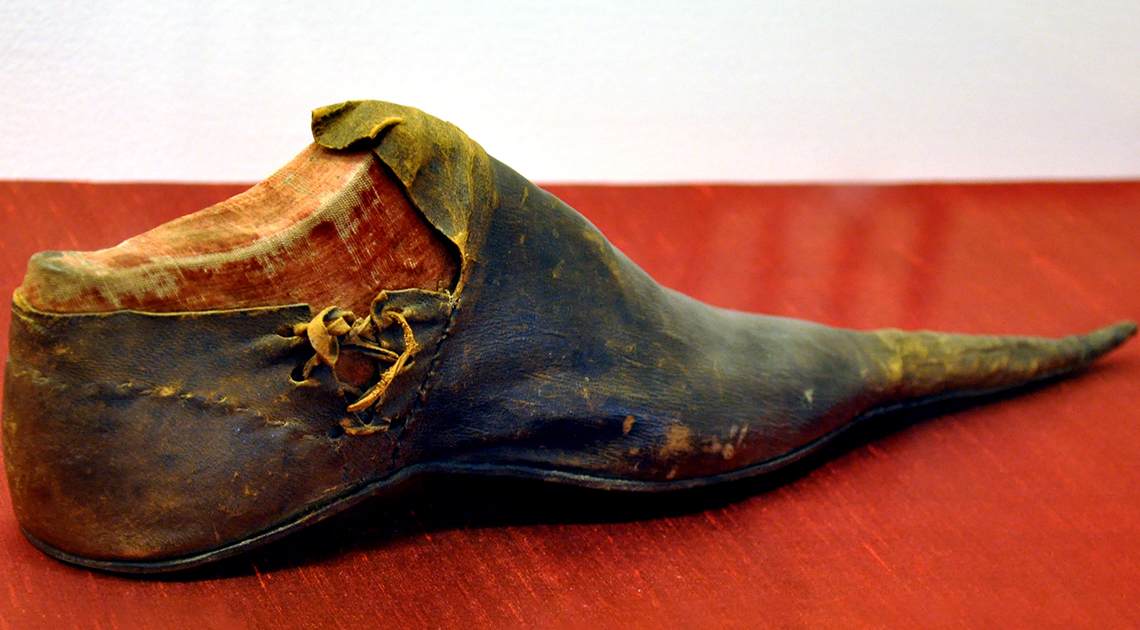Crakows, also known as the poulaine, were a popular style of pointed and elongated shoes favored by nobility during the medieval period. The shoes featured long, skinny points that extended outwards from the toes, and the points could be as long as four to 20 inches, according to Shoe IQ. But why were they such a fashionable item for nearly 150 years during the 14th and 15th centuries?
Named after the Polish city of Kraków (Cracow), the shoes were worn by anyone in Europe who could afford them. They were commonly stuffed with moss and other types of filling to keep their shape, so they didn’t flop around, reports The Met. They often featured decorative elements and embossing and were typically made of leather, but other materials were also used in their construction.
Style of the Rich and Famous
However, shoes with the extra-long tips were usually relegated to the wealthiest people who could afford to walk around in such impractical footwear, according to Atlas Obscura. Essentially, the shoes were a status symbol for the rich, just like private jets, yachts, and expensive watches are today.

A 1447 painting featuring nobles wearing poulaines.
The length of a person’s shoe tips essentially showed how wealthy they were. The shoes with ridiculously long toes were exorbitantly priced and would inhibit the user from doing any type of manual labor. Sometimes, the men would use a whalebone or tie a string or gold or silver chains to their knees from the shoes in order to prevent them from tripping, according to FIT. The poulaine showed that the wearer lived a life of leisure.
Other Reasons for the Poulaine’s Popularity
Worn largely by men, although by some women as well, crakows could be quite sexy because they were low cut and showed off a man’s ankles during a time when they wore shorter tunics and revealed more of their legs.
Jackie Keily, senior curator at the Museum of London, which houses a large collection of poulaines, told Atlas Obscura that the footwear became popular not long after the Black Death, or bubonic plague, killed an estimated 25 million people. This type of “retail therapy” may have been a coping mechanism in response to so much tragedy.

Different styles of crakows worn in 15th-century Europe.
But Why Were They Popular for So Long?
One explanation for why the fashion trend lasted so long is that during the Middle Ages it took a long time for trends to make their way across various cities and countries. After all, people didn’t have television or social media to influence their fashion choices. Instead, a trend would develop in the upper class and eventually make its way down to the lower classes. It could take many years before a popular fashion hit rural communities.
Instead of simply going out of style in England, the poulaine met its end in the court of King Edward IV. This was partly due to their salacious undertones of the shoes as some believed the longer the points on the toes were, the bigger his you-know-what was. The poulaine was deemed indecent, and a law was passed in 1463 that banned shoe tips longer than two inches. Paris had previously prohibited them in 1368 as instructed by King Charles V because it was reportedly tough for those who wore them to kneel in prayer. By 1475, they were no longer fashionable.
Lasting Impressions
Interestingly, there was a resurgence in England the 1950s, although the pointy shoes were dubbed the winklepicker. These shoes weren’t as obnoxiously pointy as the poulaine, but they had similar stuffing in the tips to resemble the shoes favored by medieval nobility.
By Noelle Talmon, contributor for Ripleys.com










Basically modern day climbing shoes